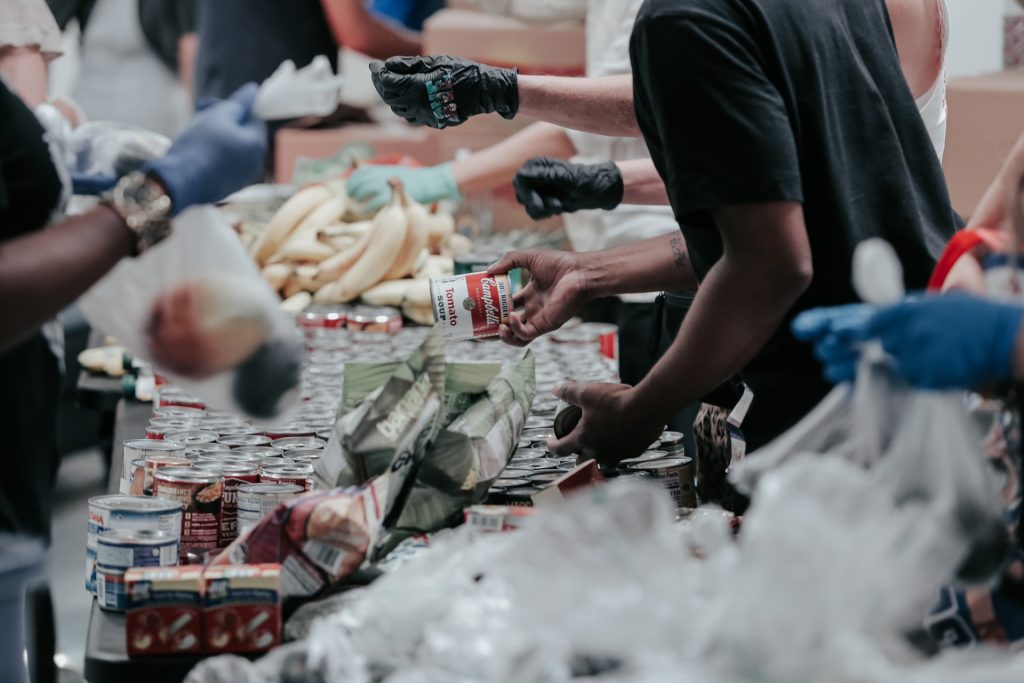WELLINGTON COUNTY – The 12th Canadian food price report from Halifax-based Dalhousie University was released on Dec. 9 with foreboding predictions on the rising cost to put food on the table in the coming year.
Simon Somogyi, the University of Guelph’s lead author for the report and a professor and researcher in the area of agri-food value chain management, said rising food costs can be blamed on the high costs of labour, transportation, animal feed and on droughts impacting grain output from prairie provinces.
The forecast for next year sees overall food costs rising by five to seven per cent (based on inflation – the devaluation of currency) with the most significant rises in the fruit, vegetable, bakery, dairy and restaurant categories.
And some provinces, including Ontario, are predicted to see above-average increases, closer to the upper threshold of 7%.
The most recent report predicts a family of four – consisting of a man, woman, boy and girl – will spend $14,767 on food in 2022, an increase of $966 from the $13,801 spent to feed a family of four this year.
To feed a family of six, the cost is predicted to hit $19,223 in 2022.
As for the report’s track record, predictions have been within range in 10 out of the 11 past years. Last year’s prediction was $106 off the actual annual expenditure observed.
As the dollar continues to lose value and buying power, researchers see food insecurity encroaching on more people’s lives.
“There will likely be more demand for and reliance on food programs or food banks if incomes do not rise to meet food expenditures and other basic needs,” the report states.
“At the same time, organizations that provide aid to the food-insecure may have difficulty meeting increased demand and rising food expenditures while operating with stagnant funding and budgets.”

A food price report published by Dalhousie University predicts a family of four – consisting of a man, woman, boy and girl – will spend $14,767 on food in 2022, an increase of $966 from the $13,801 spent to feed a family of four this year. (Pexels image)
The Advertiser recently spoke to food banks throughout the county and found several reporting increases in the number of people reaching out for assistance.
“I think families in general are seeing an increase in their grocery bills … it’s also a stretch for them to provide for their own family, let alone thinking about providing for other families in the community,” said East Wellington Community Services food bank and fund development manager Stephanie Conway.
“I mean, even as a consumer myself going out, you can see that there has been quite an increase in costs overall. People who at one time were donors could end up being a client.”
Already Conway has noticed fewer donations of items with higher price tags.
“For example, we used to always have large amounts of cereal, it was always an easy item for people to donate … I’m noticing now that we’re not seeing as many of the boxes of cereal donated and the shelf is a little bit more empty than it usually is at this time of year,” Conway said.
She admits the food bank is well-supported by the communities it serves in Erin and Guelph/Eramosa, but she is concerned about the effect of perpetual price increases.
And now that food prices are up, Conway can’t see them coming back down.
“If we’re willing to pay the prices, why would they reduce it?” she said of food manufacturers and distributors.
“We’ll have to start getting creative as a food bank to make sure we’re still supporting those people that are in need,” she added, noting she’s already a frugal coupon clipper.

Food banks throughout Wellington County are reporting increases in the number of people reaching out for assistance. (Unsplash image)
The report’s grim outlook also has people like Peter McPhedran, a retired medical doctor and board member of the Centre Wellington Community Foundation, concerned about what lies ahead.
“I think the food report is just going to stress everybody that is on a tight budget,” McPhedran told the Advertiser.
On the other hand, McPhedran said, he’s been around long enough to have seen food insecurity as a consistent problem – not one solely attributed to temporary factors like the pandemic, but one he believes will plague average people for decades to come.
“Nobody owns the problem, nobody takes leadership for it, takes ownership for it, and looks at it in a holistic way to try and solve it,” he said about food insecurity.
As wages stagnate but the cost of everything else, not just food, continues to rise, McPhedran says something, somewhere eventually has to give.
“If you’ve got limited income and your choice is between paying the rent or paying for food, that’s a pretty tough decision,” he said.
McPhedran, in addition to his role as a CWCF board member, is also a member of the foundation’s Social Determinants of Health Working Group, which is currently analyzing the issue of food insecurity through an ongoing survey aimed at county residents.
Of the 102 survey respondents to date, 18 per cent have said they’re worried about running out of food, 11% are unable to eat balanced meals, 16% have reduced meal sizes or skipped eating altogether, and 15% reported reliance on community services, like a food bank, to feed themselves.
Programs like Guelph Community Health Centre’s The SEED are trying to confront food insecurity by removing profit as the focus in the food supply chain and replacing it with a pursuit of social equitability.

The SEED community resources coordinator Madeline Barber says our food system isn’t working for everyone. (Pexels image)
“We have a food system that’s not working for everyone,” said The SEED community resources coordinator Madeline Barber.
If enough able customers purchase food at full price, The SEED has enough financial padding to sell the same quality food at a discounted sliding scale (17 to 50% off) to those who are unable to afford food at typical grocery store prices, explained Barber.
The logic is: those who can afford to pay full retail prices for food are going to do so anyway at a grocery store, so why not instead buy food from The SEED where the money spent on food doesn’t pad someone’s bank account but helps to cover the cost of a neighbour’s groceries.
The end result of a pioneering program like the one offered by The SEED is a more equitable food supply chain and distribution of resources that is not only sustainable, but as McPhederan says, leads to a healthier community that’s better off for it.
In fact, the Centre Wellington Community Foundation recently donated $10,000 to The SEED to facilitate expansion of its services into Fergus and Elora by covering transportation costs for a year.
Barber said as rising food costs press people further against a wall, their waitlist to purchase at discounted prices is growing faster than the list of those who are purchasing food at full cost, although the latter too is catching up, which she finds encouraging.
“Overall with food insecurity, The SEED takes the view that food insecurity is very much tied to income,” Barber said.
And as the cycle of devaluing currency begets a need for higher wages to cover increasing costs of products which are needed to cover needed higher wages, the issue of food insecurity will continue.

The SEED community resources coordinator Madeline Barber says food insecurity is tied to income. (Shutterstock image)
The SEED program, Barber said, can scale with the issue, so long as there are people who are able and willing to continue paying the full price of food so their less able neighbours can benefit.




